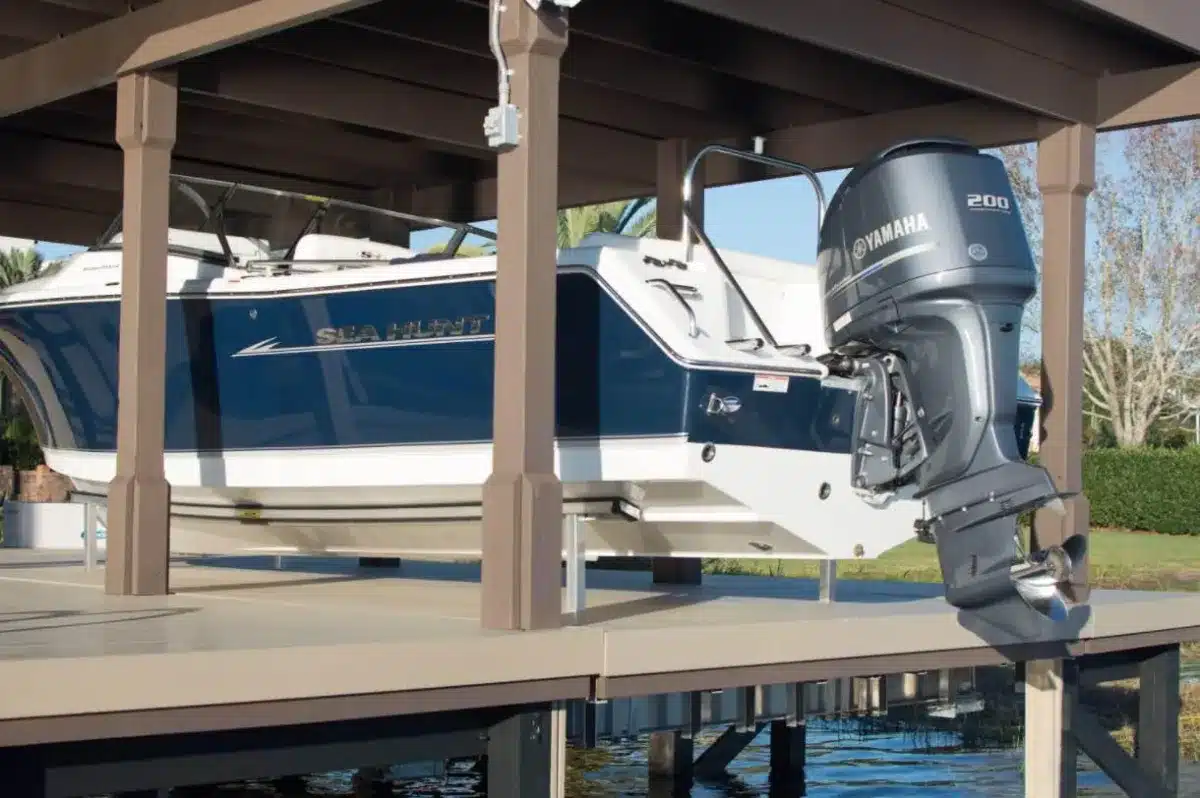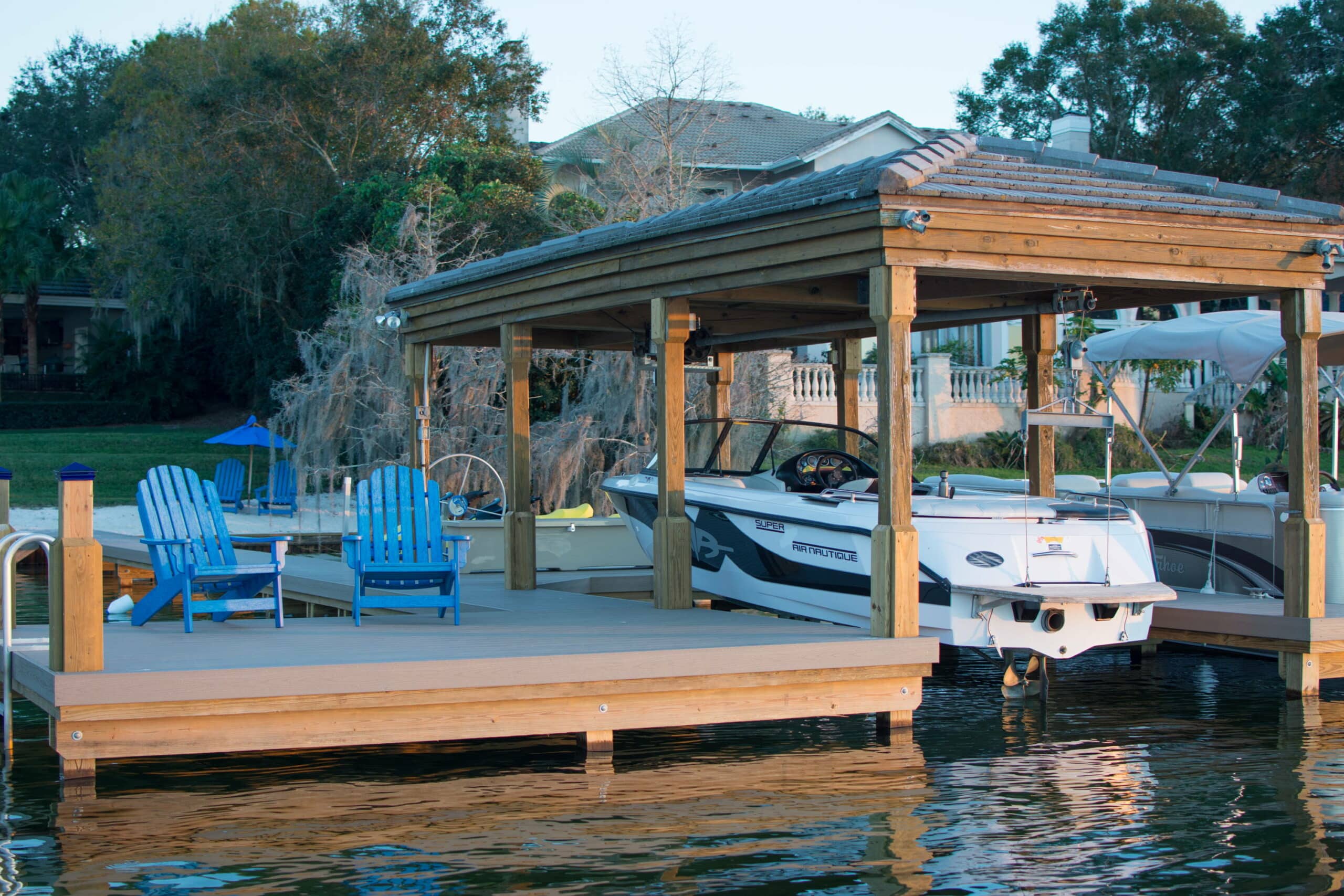Preparing a Boat for a Hurricane and What to Do With Your Dock Immediately Before it Hits
Don’t Underestimate A Hurricane
Even though many hurricanes are not life-threatening, no tropical storm or hurricane should be underestimated. This is especially true if you live on the water and have a boat dock. There are several precautions to ensure your investment suffers as little damage as possible. To prepare your boat dock before hurricane season starts, review our blog post here.
But how can you prepare for a hurricane passing over in 24 hours?
Start by securing your boat.
What to Do with Your Boat

There are two options for securing your boat before a hurricane or severe weather event hits. The first option, if you are able, is to remove your boat from the water and store it inside a secure, safe location such as a storage facility or garage.
This might not be feasible for everyone, but the idea is to keep any flying debris from damaging your boat. Do not leave your boat outside, where debris can easily damage it.
For this reason, most boat owners should opt to secure their boat in the boat lift itself. Below are some of our recommendations for how to best fasten your boat to withstand hurricane-force winds, rain, and possible flooding.
How to Secure Your Boat on the Lift
Before Hurricane Ian, Peter Fleck, Owner/Contractor for Q-ICE Builders, released a video describing best practices for securing your boat on the lift.
In case you cannot watch the video, here is a summary:
- Lift your boat as high as you can in the boat lift without hitting the top or being able to swing into the gear plate.
- Tie off all the corners as much as possible to keep the boat from swinging from wind or waves. Dock lines can tie it down to the cleat or cradle. Make sure the boat is secured so it cannot be pushed off the cradle. (Securing your boat this way will prevent swinging, which can cause major damage to your boat and boat dock.)
- Pull the drain plug on the floor of your boat to allow any water from the rain or waves to drain.
- For boats with bilge pumps, make sure they are operational to handle any water that does get in.
What to do With Your Boat Dock

Turn off the Water & Power to your Boat Dock
Second, prepare your boat dock by turning off the electricity and water before the hurricane. This is important in case of unexpected damage when it is too dangerous to go outside.
Secure all Loose Items and Chairs
Third, consider every loose item on your boat dock, including tables, chairs, toys, or storage containers. Hurricane-force winds can easily exceed 100 mph and sweep away any unsecured items.
Take Pictures of Everything
Lastly, now is the time to take pictures of everything, including your boat dock, dock boards, and boat lifts, if you find storm damage after the hurricane passes. This is all included in your hurricane plan to ensure you protect your investments and avoid unnecessary costs or downtime when using your boat during the summer months. It’s a good idea to review your boat insurance and policies before a threat of storms to understand what is covered and contact your insurance company for any claims.
Here’s the Rule: Over Prepare
Hurricane preparation is perhaps backward at times. Florida residents are more concerned about stocking up on toilet paper than securing their homes and boat docks. We want to ensure you take the necessary and informed precautions to protect your primary investments and property. Because hurricanes and tropical storms can be unpredictable in their path and intensity, it is always best to over-prepare rather than under-prepare and regret that decision later.
Ensure your hurricane plan is comprehensive, considering all the possible variables, including fluctuating water levels and the potential for severe weather. Make sure your current boat insurance will also provide peace of mind in protecting your assets.
Contact Q-ICE Builders to See if Your Boat Dock is Ready for a Hurricane
If you are unsure your boat dock can withstand a major storm, contact Q-ICE Builders to schedule a consultation and learn how we can upgrade your dock to better withstand the next storm.
Preparing a Boat Dock and Boat for a Hurricane FAQs
Should I turn off the water and electricity to my boat dock before a hurricane?
Yes, turning off the water and electricity to your boat dock is crucial to prevent any electrical hazards or water damage in case of unexpected damage during the storm.
How can I protect loose items on my boat dock from hurricane-force winds?
Secure or remove all loose items, such as tables, chairs, toys, and storage containers. High winds can easily turn these items into dangerous projectiles.
Why is it important to take pictures of my boat dock and boat before a hurricane?
Taking pictures helps document the condition of your property for insurance claims if it is damaged by a storm. It ensures you have proof of your assets’ pre-hurricane state.



